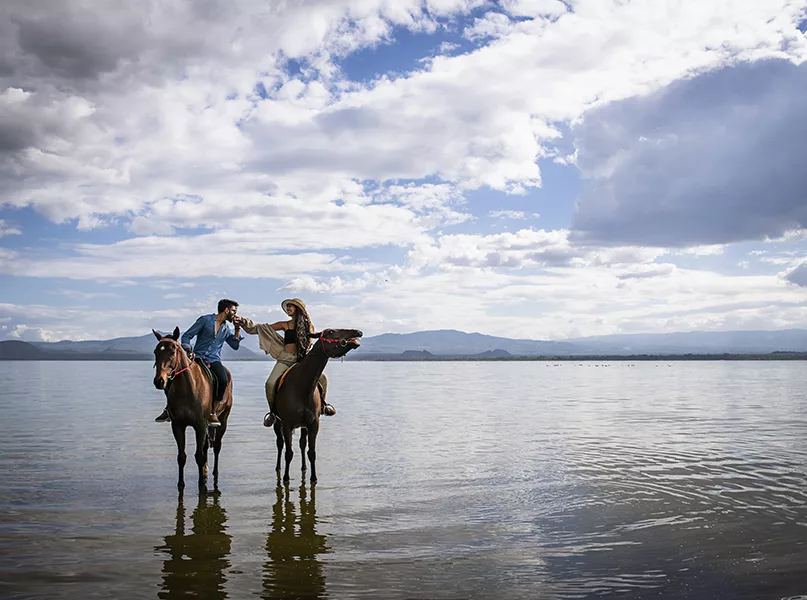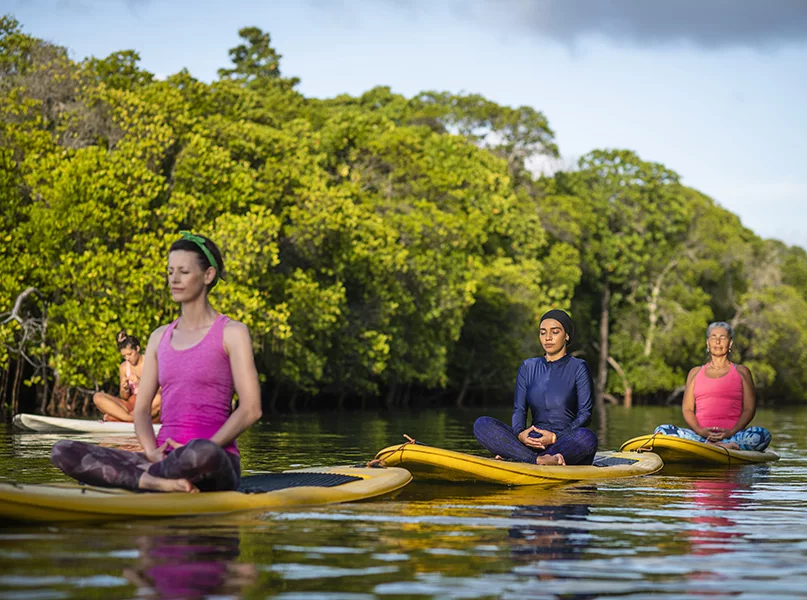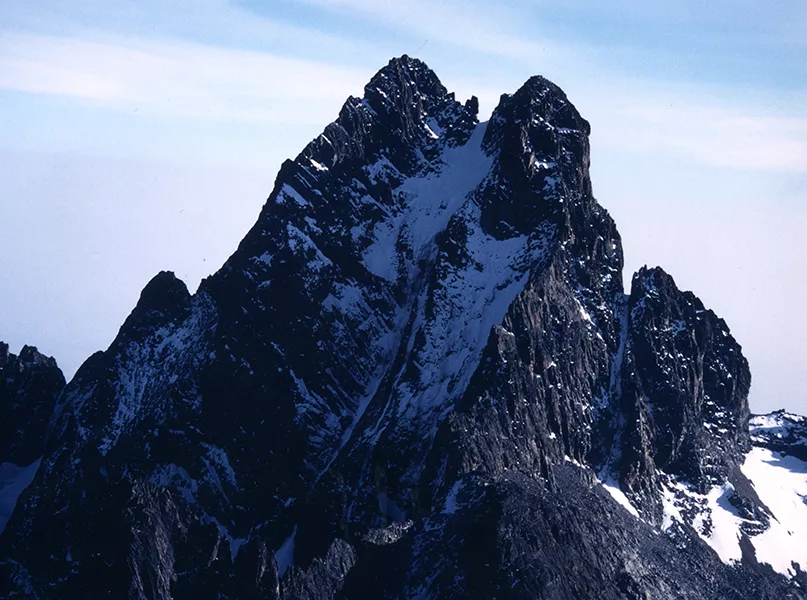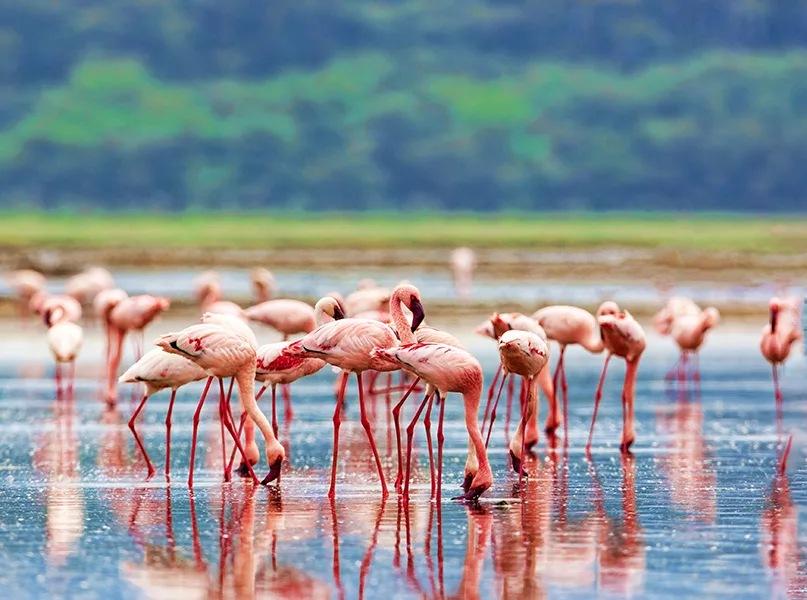The Kenya Tourism Board (KTB) provides a service which is invaluable to the strengthening of the country, as the sole body in charge of Kenya’s world renowned but ever-increasing tourism market. The board achieves this thanks to a passion for providing its visitors with the most enriching experience possible, whilst ensuring the ongoing sustainability of the planet and the country’s wildlife. John Chirchir, Acting CEO of KTB, tells us how the organisation has continued to grow and develop its tourism sector.
KENYA TOURISM BOARD
Firstly, can you talk us through the origins of KTB and its initial vision?
John Chirchir, Acting CEO (JC): KTB is a state corporation established and regulated under sections 29-39 of the Tourism Act, 2011.
Our mandate includes developing, implementing, and co-ordinating Kenya’s national tourism marketing strategy. We market Kenya locally, nationally, regionally, and internationally as a premier tourist destination. We also identify tourism market needs and trends, and advise tourism stakeholders accordingly.
The initial vision was to be the preferred destination for diverse, innovative, and authentic experiences. This vision has further evolved to position Kenya as the most visited tourism destination in Africa, offering sustainable, memorable, and authentic experiences.
Why, in your opinion, should someone visit Kenya? What makes it stand out from other tourist destinations in East Africa?
JC: Hospitality is in our nature, and the Kenyan people love visitors. The country is a diverse, authentic, sustainable, year-round destination where travellers can enjoy a different experience every day.
Kenya stands out as an iconic destination in Africa, offering the best of beach, bush, and city experiences, as well as active and sustainable travel options for the discerning traveller. Most visitors come to Kenya for its iconic and authentic wildlife experiences and return for its people.
Kenya is the original home of the safari and was recognised as the leading safari destination in 2013 and subsequently on seven consecutive occasions from 2015 to 2021 by the World Travel Awards.
We have 27 national parks, 34 national reserves, and four national sanctuaries. We are home to the ‘cradle of mankind’ and recognised by palaeontologists globally for archaeological discoveries in the country, thus contributing to the story of human evolution.
Kenya is also the home of not only the iconic Maasai community, but 41 other communities contributing to our hospitable, friendly, and welcoming nature. We carve out a uniqueness from the rest because of attributes such as our year-round warm weather, the warmth of our people, as well as good connectivity and diverse tourism offerings that cater to all visitor requirements.

What kind of travellers does your country appeal to most?
JC: Kenya has for a long time appealed to travellers from all over the world.
A good number of tourists visiting the country have grown to become loyal and repeat visitors to Kenya with their travel motivations centring on sun and sea, with safari and beach being among their preferred tourism experiences.
We have also noted the growing travel potential among young travellers who are keen on activity-oriented travel opportunities. Hence, we seek to position Kenya as a great place for adventure travel.
In addition, the growing affinity by visitors to experience different cultures and heritage of the destination has created tremendous opportunities for various communities to benefit directly from tourism.
Which national park would you suggest for visitors who wish to see the true essence of Kenyan wildlife?
JC: Having been widely recognised as one of the best parks in Kenya, Watamu Marine Park and Reserve is the haven of green turtles. It houses a spectacularly diverse, aquatic ecosystem with over 100 types of coral and 600 fish species, among other marine species. This makes the reserve a favourite underworld destination amongst maritime and deep-sea enthusiasts.
Kenya has also become synonymous for the wildebeest migration that takes place from July to November, which is acknowledged as the Seventh Natural Wonder of the World.
We are also home to the twin migration, with the Humpback Whales migrating from Antarctica to warmer climates, congregating in Kenyan waters between July and August to calve and mate at the Watamu Marine National Park and Reserve. After spending two months breeding and nursing their calves, Humpback Whales then make the journey back to Antarctica around September.
The Meru National Park too offers breathtaking and complete wilderness experiences. The park is famous for the Joy Adamson’s ‘Born Free’ story that details her life and research amongst lions and cheetahs. Elsa, the famous lioness, has her grave marked inside the park and is famously known in Hollywood for the Born Free movie, which is considered a timeless classic.

Alternatively, what is the country’s most underrated attraction?
JC: Kenya has a number of vibrant cities, some of the most well-known being Nairobi, Mombasa, Kisumu, and Nakuru. Starting with the capital, Nairobi is a city filled with urban experiences, superb cuisine, and a buzzing nightlife, which makes for a great stopover while en-route to or from a safari. It is Kenya’s very own “Green City in the Sun”.
Mombasa is rich in its culture, history, and endless white sandy beaches, owing to its 480 kilometre (km) coastline. In fact, the true heart of Mombasa is in the culture of the people, the pristine beaches, exotic old town, narrow winding streets, and Arab architecture.
Meanwhile, Kisumu is a port city on the shores of Lake Victoria with wide streets and fine colonial architecture. The best way to appreciate the beauty of this region is on the lake itself, where the sun shines brightly and gentle breezes rise from the water. It is renowned for perfect sunsets and its array for fish delicacies.
Elsewhere, Nakuru is Kenya’s third largest city and home to the pink flamingos, thousands of which are attracted by its algae-filled soda lake. The region is among Kenya’s most beautiful wildlife havens and is known to be a birders paradise.
The majestic Mount Kenya, an ancient extinct volcano, is the second-highest peak in Africa after Kilimanjaro at 5,199 metres (m).
The Mount Kenya region has one of the most impressive landscapes in East Africa with three major peaks – Batian (5,199m), Nelion (5,188m), and Lenana (4,984m) – and is recognised as a UNESCO World Heritage Site. The park is endowed with flora and fauna and is home to many endemic species, including those threatened with extinction like the Abbott’s Starling, bongo, and black rhino, among others.
Given KTB hosted the Africa Climate Summit (ACS) earlier in the year, how does the organisation incorporate sustainability into the country’s tourism landscape?
JC: As a nation, we continue to outline our commitment to support climate change and sustainability across all sectors, including tourism. We are currently implementing the COP26 declarations on sustainability and climate change and have committed to restricting the use of fossil-fuelled vehicles within all national parks and reserves to usher in fully renewable energy by 2030. We are also working with the hospitality and tourism facilities in Kenya to adopt renewable energy and a circular economy in their operations by 2030.
In 2017, Kenya banned single use plastic bags to address the challenges posed by pollution. Already, some of the facilities in the parks and national reserves have introduced electric vehicles (EVs) and adopted solar energy. The eco-rating of our facilities has also entrenched the culture of sustainable tourism practices.
KTB has a sustainability committee in place and incorporates responsible tourism aspects in its key programmes and activities, such as the Magical Kenya Signature Experiences Collection criteria.

How would you say the Kenyan tourism industry has changed over the last five years?
JC: The destination has become more customer and experience-centric. We ensure travel businesses are informed on the emerging trends that are influencing travellers’ choices in destinations. We have also adopted a proactive approach in defining and highlighting Kenya’s unique and diverse tourism offering through the introduction of the Magical Kenya Signature Experiences Collection. Technology has also resulted in the automation and introduction of digitally driven tourism experiences, further enhancing the customer’s journey to and within the destination.
Following this, what trends are currently transforming the tourism industry in Kenya, and how are you harnessing them?
JC: The trends transforming the tourism industry in Kenya include the search for sustainable travel options, alongside other meaningful experiences that are off-the-beaten-track. As such, travellers are seeking experiences beyond the usual tourist circuits, such as incorporating adventure and cultural experiences into the standard safari and beach packages.
Kenya is enhancing its culture and heritage tourism offering to ensure its visitors experience the uniqueness of the various communities, enabling a greater connection with Kenyans. The growing popularity of culinary experiences has seen Kenya excel in providing visitors with memorable and appetising cuisines. Additionally, events and festivals such as the World Rally Championship, Magical Kenya Golf Open, Lamu and Turkana Festivals, among others continue to contribute towards the growing interest from travellers in visiting Kenya.
The current tourism industry is becoming increasingly digital, reaching and connecting all generations. Our campaigns and content will feature in more digital platforms to reach as many targeted audiences as possible.
Finally, how do you foresee Kenya’s tourism sector developing in 2024?
JC: As a destination, we will continue to grow and increase brand visibility for our magical country. We will continue to establish ourselves as the leading competitive destination by offering diverse tourism experiences. Our focus is to constantly meet and exceed the expectations of the ever-changing traveller with an emphasis on sustainable tourism practices and offering meaningful experiences. We will also carry on highlighting Kenya’s diversity in terms of local destinations and product ranges, providing a whole array of experiences for travellers to choose from.





























